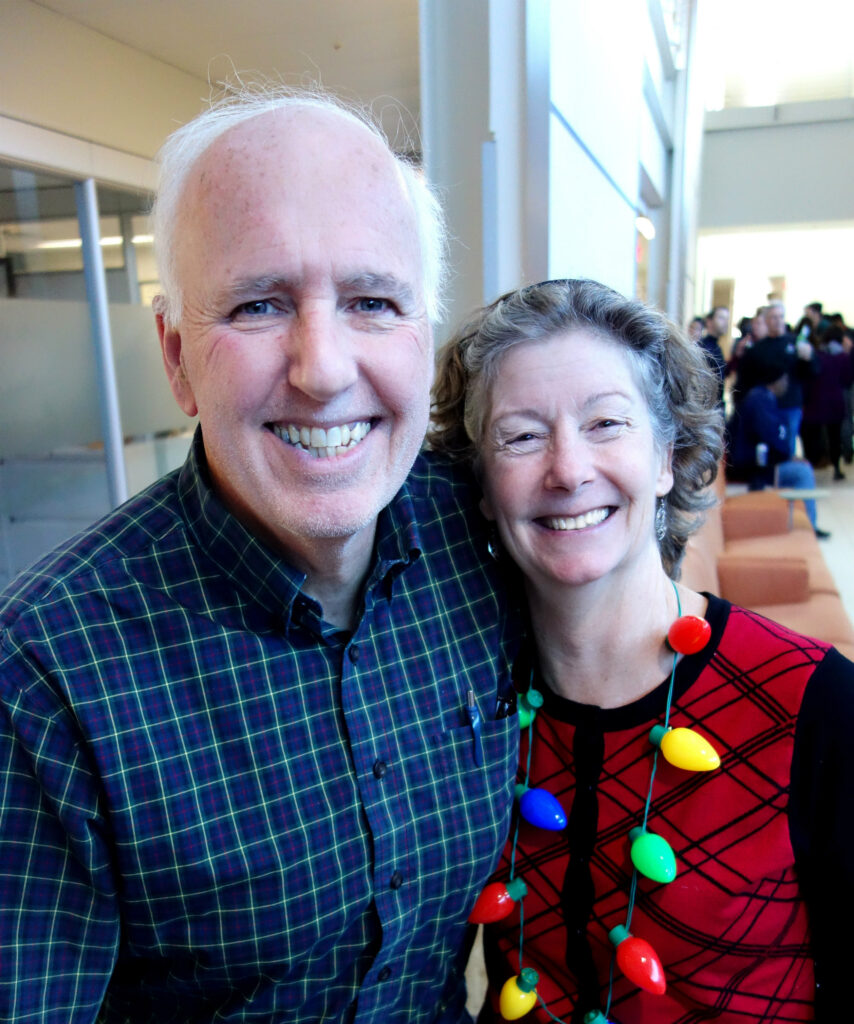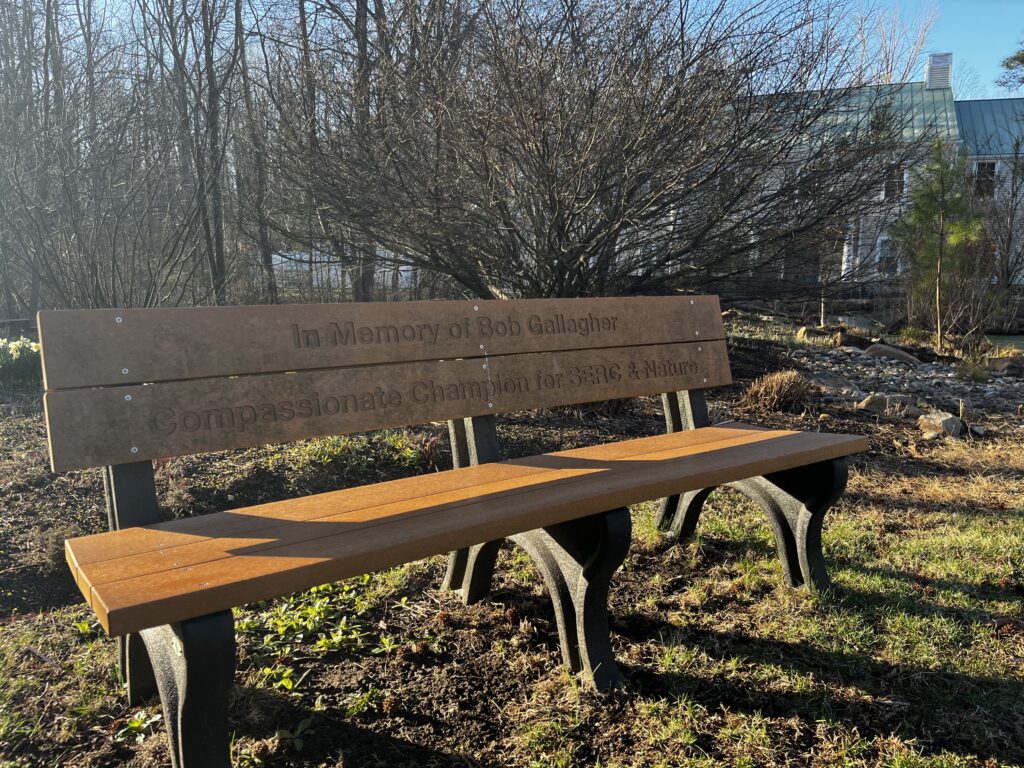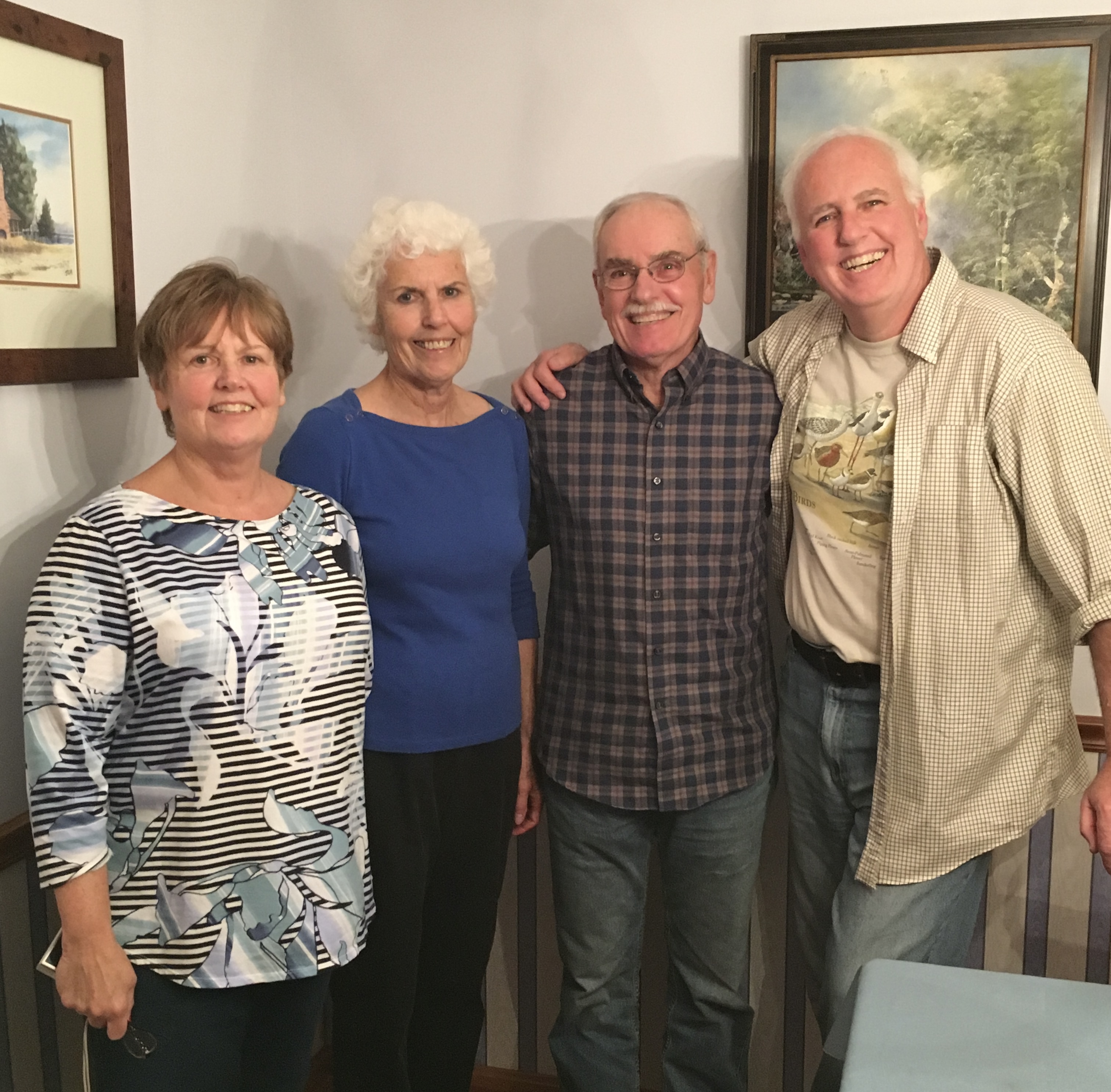
by Kristen Goodhue
This is the first of two In Memoriam tributes, honoring two long-time staff members who passed away while still employed at our center over the last decade. As the Smithsonian Environmental Research Center enters its 60th year, we recognize that many of our achievements would not have been possible without their hard work and passion.
The invisible handprints of Bob Gallagher cover more than half the buildings at the Smithsonian Environmental Research Center. They’re also present in the center’s most popular volunteer program, and some buildings that have yet to be constructed. From 2004 until his death in 2020, Gallagher served as the center’s executive officer. And the campus as it is today would not exist without his efforts.
Born in New Jersey in 1954, Gallagher came of age during the environmental movement of the 1970s.
“We all grew up seeing the environment under siege,” said Bob Stack, Gallagher’s roommate at Rutgers University. Both men grew up in industrial parts of New Jersey where pollution was widespread. They were also familiar with the dangers of pesticides like DDT and remember a massive oil spill off the coast of Santa Barbara. At one point, the Cuyahoga River in Ohio also had so much pollution it caught on fire.
“All of us at that point in time were really committed to doing something beyond ourselves to make the world a better place and make the environment a little less stressed,” Stack added.
Gallagher received a bachelor’s degree in wildlife biology from Rutgers and a master’s in environmental sciences from Louisiana State University. He went on to work at the Academy of Natural Sciences of Philadelphia (now the Academy of Natural Sciences of Drexel University). He stayed there until an opportunity emerged to join the Smithsonian Environmental Research Center (SERC).
“There is nothing in his early years that would have led him to believe that he would work for the Smithsonian, just a pipe dream,” said Tatiana Gallagher, his wife of 32 years. “He thought very highly of the institution and was extremely excited to be part of SERC when he eventually got there at 50.”
Bob Gallagher arrived at SERC in 2004—just one year before SERC’s current director, Tuck Hines, would take the helm. The two worked together for nearly two decades.


Left: Charles McC. Mathias Laboratory (Credit: SERC) Right: Three of the six Visitor Cottages at SERC (Credit: Nina Tan)
Gallagher helped create a new Facilities Master Plan for SERC in 2008. It included plans for a new laboratory, six Visitor Cottages, a Collaboration Commons for offices and events, and an Environmental Leadership Center for retreats and stakeholder meetings. He lived to see one of those buildings completed: The Charles McC. Mathias Laboratory. Finished in 2014, the Mathias Lab was the first building in the Smithsonian to achieve LEED-Platinum status, the highest rating for green building at the time. The six Visitor Cottages, also LEED-Platinum, were finished in 2023 after his death.
“He was the persistent force to help implement a vision for a whole new SERC campus that focused on enhancing teamwork for research and public engagement, with a strong blend of sustainability,” Hines said. “He was the advocate behind-the-scenes, to engage key people in central Smithsonian to support our ambitions to transform our facilities and programs. The Mathias Lab is a miracle of his commitment. And most important, Bob was a good friend with a sensitive respect for SERC’s community values.”
SERC’s participatory science program also wouldn’t exist without Gallagher’s efforts. Working with Smithsonian finance specialist George Thomas, Gallagher helped secure the funds for a new federal position at SERC: Citizen Science Coordinator. Alison Cawood took the job of creating an organized program to help match volunteers with research projects. Now called the participatory science program and headed by Rachael Mady, the program attracts hundreds of volunteers every year.

Outside of work, Gallagher’s family remembers his abiding love of nature. He named their 4-acre home “Nature’s Oasis,” and his daughter, Larisa Gallagher, has clear memories of her father’s time outdoors.
“He loved summer thunderstorms on the front porch swing after a day of gardening and mowing the lawn,” she said. The same enthusiasm, she added, seeped into their family trips. “His favorite vacations were always rooted in nature, from vacations at the beach to hiking in the redwood forest to the Luray Caverns in Virginia.”

Gallagher passed away from cancer in 2020 while still SERC’s executive officer. He had guided the center through three presidential administrations, two government shutdowns and the first several months of a global pandemic. He is survived by his former wife Tatiana Gallagher, daughter Larisa Gallagher, son Chris Gallagher (spouse Tara), and siblings David Gallagher (spouse Lorraine), Anne Murphy (spouse Pat) and Eileen Witkowski (spouse John).
Bob Stack, Gallagher’s college roommate, remained his friend until his death. He said he sees Gallagher’s devotion to the environment as a lesson in good living.
“Stay true to your values and your principles. Don’t sell out. And work for a better world,” Stack said. “We all say we want one. And if we all want one, then we all need to do at least some basic things for the world, for the planet, for the people that come after us.”

